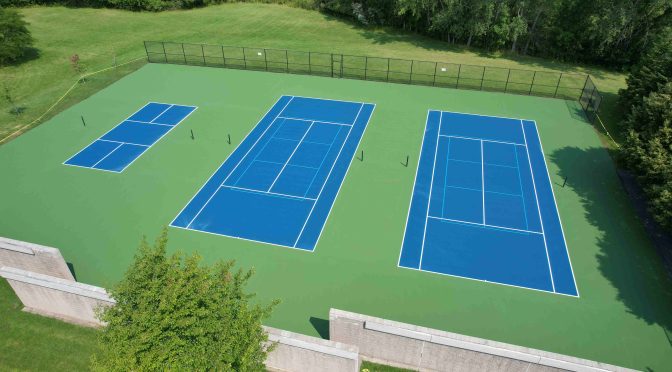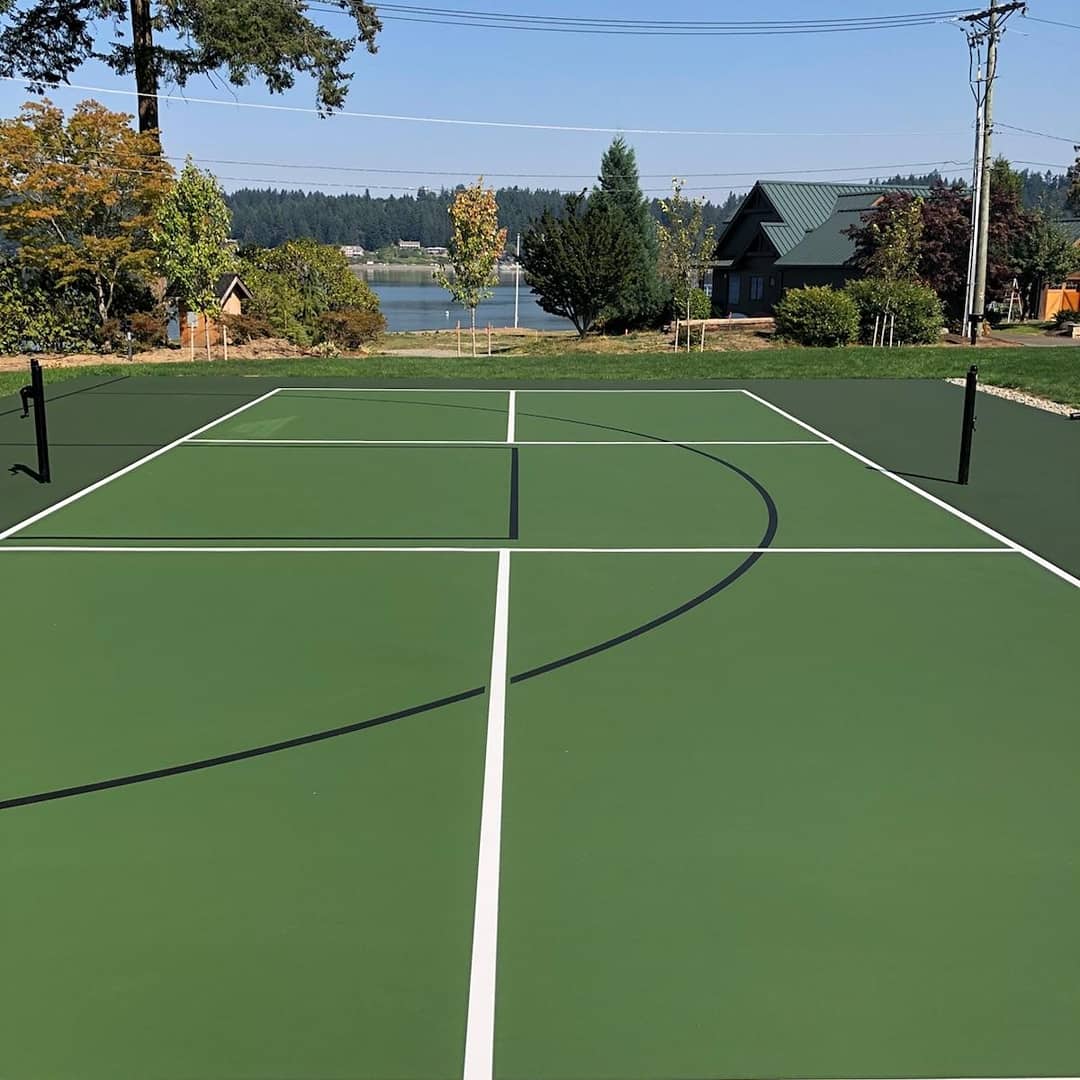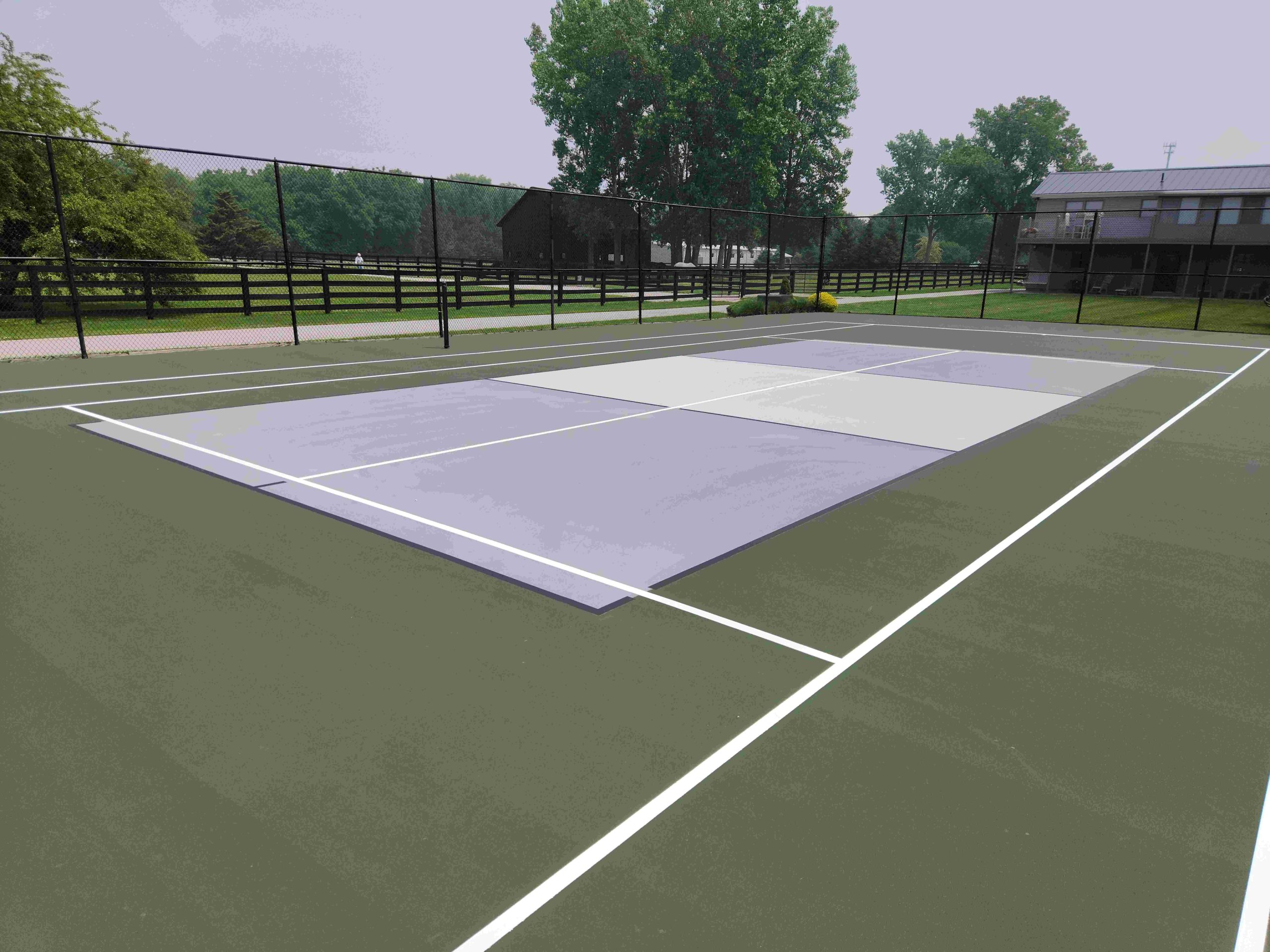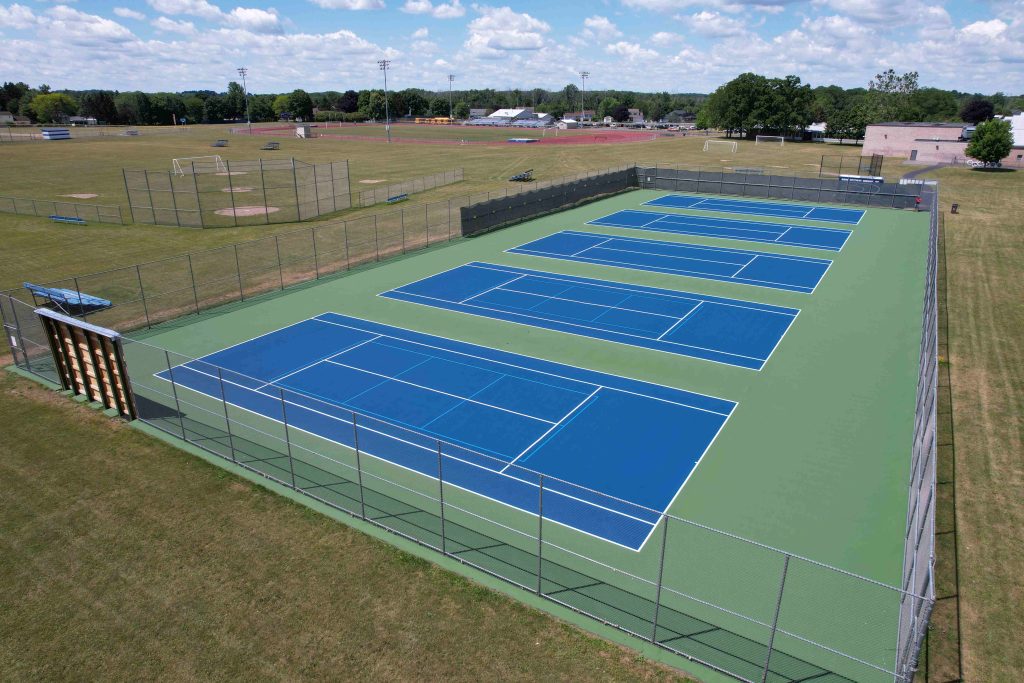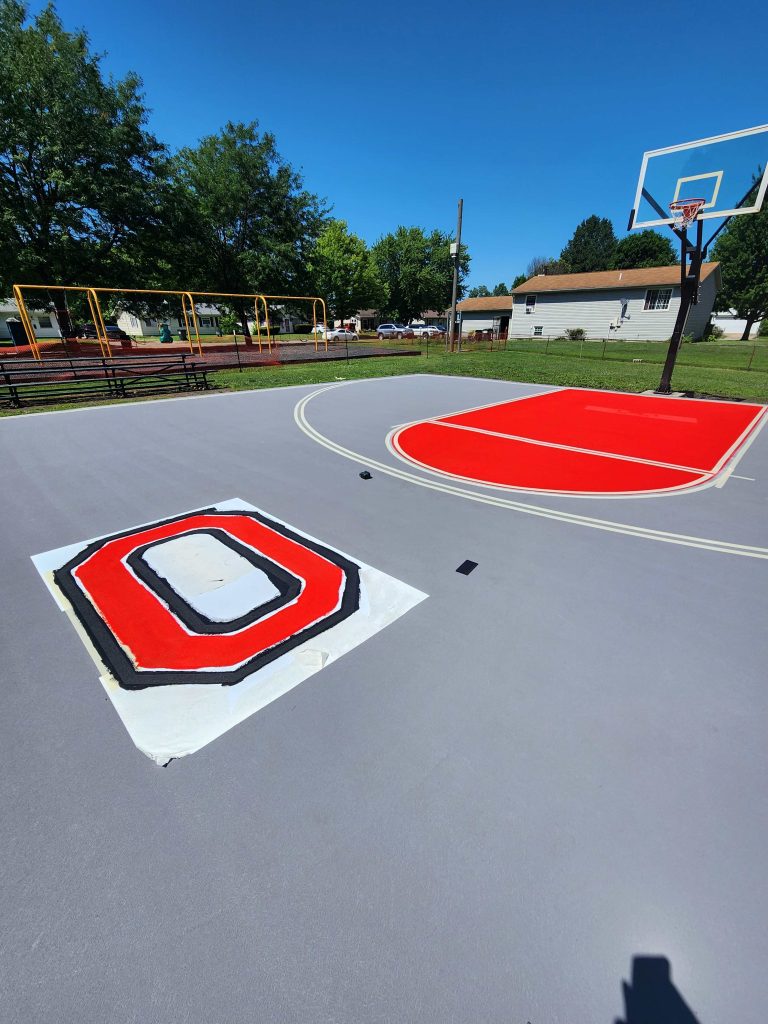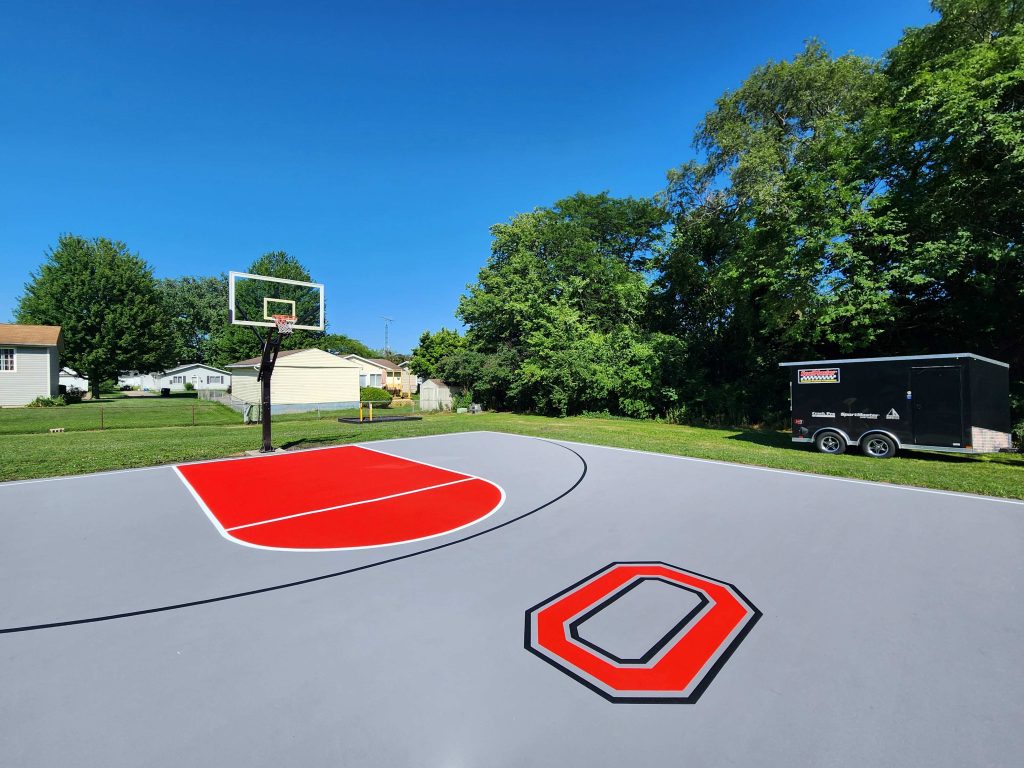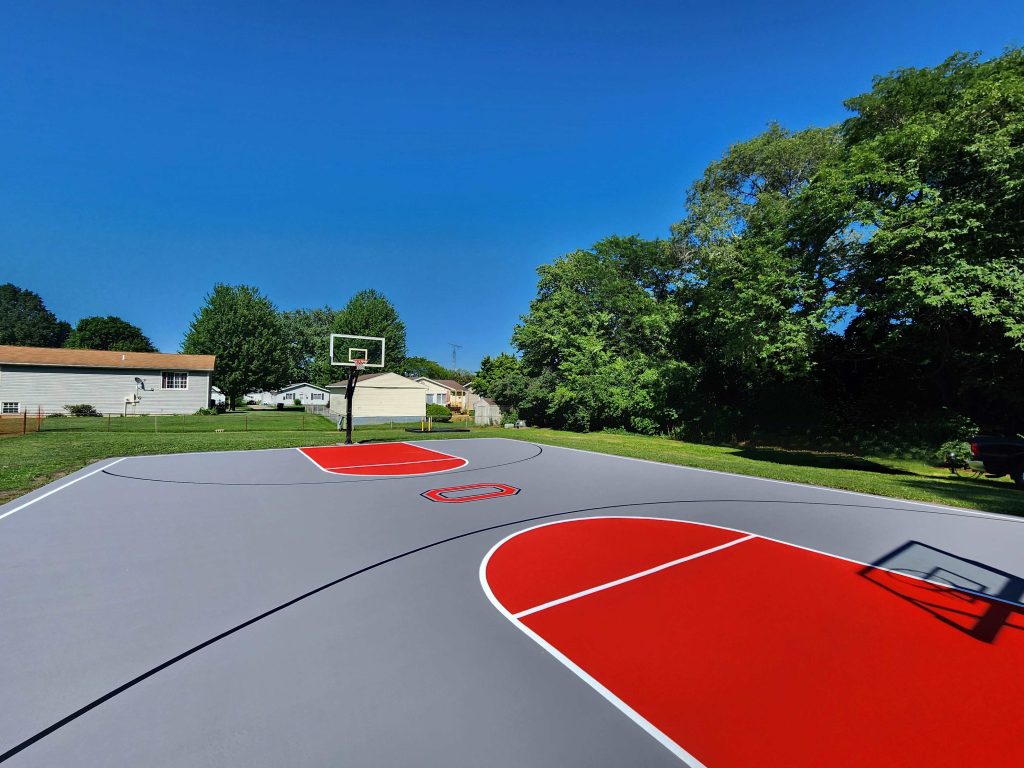The popularity of pickleball has greatly increased the trend of multipurpose athletic courts, or combination courts. For example, if you want make the best use of space on your new or existing court, you can add lines for other sports on the same base (asphalt or concrete). This is known as “Blended Lines“. We see many different combinations of recreational courts, including:
- Tennis & Basketball Combo Courts
- Pickleball & Basketball Courts
- Tennis Courts with added Pickleball Lines
- Ten & Under Kids Lines for Tennis along with full-size Tennis
- Futsal Mini-Pitch & Basketball Combination
- Multiple Playground games on the same area
What is the best way to combine different sports on the same court?
When it comes to court surface colors and line colors there are many different ways it can be done. Most people prefer having the main sport lines painted in white. For instance, Tennis Courts are larger and have the larger striping footprint, so the tennis court lines are usually in white. If adding pickleball to the same court, the pickleball lines are added in a different color so that the players are not confused by the same colored lines overlapping for 2 different sports.
What color should I make the blended lines?
This is another question that doesn’t have a right or wrong answer. However, this is the main question to ask yourself:
Do you want the secondary court lines to blend in more or “pop” and be more visible?
For more visible lines, use brighter colors like yellow or a lighter version of the surface color. If the playing surface is blue, go with a lighter color of blue by adding some white line paint into some leftover surface paint for lines. Or, mix some line paint with one of our lighter blue pigments (recipe below).
For more subtle lines, use darker colors of blended line paint, like black or a darker version of the surface color (i.e. darker blue lines on a standard blue surface color).
How to make colored line paint with SportMaster
SportMaster offers an extremely easy and flexible system to make various colors of line paint. By using our ColorPlus Tint System, you can mix small amounts of paint to use on blended lines. Note, never use the ColorPlus Tint by itself, without mixing into one of the SportMaster Neutral Base coatings. Here is the easiest way:
Components:
- 1 Gallon of Stripe Rite (Non-bleeding primer that looks white, but dries clear)
- 1 (24 oz Jar) ColorPlus Tint (Available in 17 different colors)
- 2 cups – Ultra-fine silica sand (80 mesh, available at most SealMaster/SportMaster locations)
Instructions:
- Pour 1 gallon of Stripe Rite into a clean pail (3 to 5 gallon bucket recommended)
- Open the ColorPlus Tint Jar and pour one jar into the pail of Stripe Rite
- Slowly pour 2 cups of silica sand into the pail and mix thoroughly with drill and paddle mixer until mixed
- You can paint with a brush from the pail, or you can funnel the colored line paint mixture back into the Stripe Rite jug to utilize the pour spout for striping the court. Pour the material out into a small bead between 2 rows of masking tape and use a 3″ paint roller on a threaded handle to paint the lines.
- For best results, use a good quality masking tape (not a blue or green painters tape, which are designed for drywall).
- Also, for extra-sharp lines, apply un-tinted Stripe Rite between the tape first and allow to completely dry, prior to painting your lines. Stripe Rite bleeds under any voids and seals off any voids between the tape and textured surface.
Colored line paint for stencils and other court markings
Making small amounts of colored line paint is easy with the mixing method, above. These colored paints can also be used for painting logos and other markings on court surfaces. Custom vinyl stencils, as well as many other tools, equipment and SportMaster products are available through the SealMaster system.

